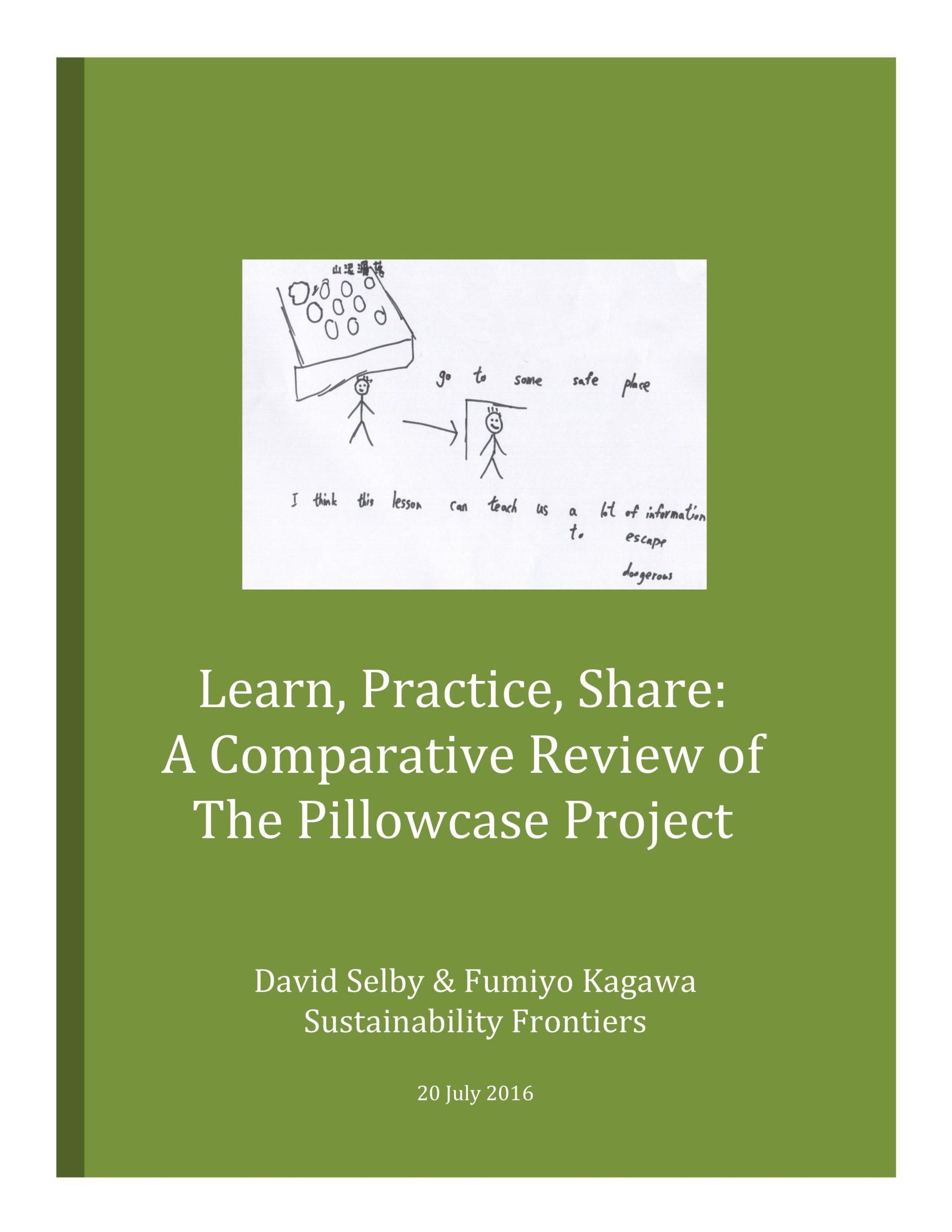In 2016 the Global Disaster Preparedness Center (GDPC), a joint venture of the International Federation of Red Cross and Red Crescent Societies (IFRC) and the American Red Cross, entered a research partnership with Fumiyo Kagawa and David Selby of Sustainability Frontiers to review the international pilot of the Pillowcase Project, a structured (‘Learn, Practice and Share’), active and child-centered disaster preparedness program originally designed and used by American Red Cross domestic chapters.
From 2014, the program was expanded to Australia, Hong Kong, Mexico, Peru, the United Kingdom and Vietnam. The program involves a 60-90 minute disaster preparedness lesson that is delivered by Red Cross staff and volunteers and that is designed to teach 8-11 year-old students about local hazards and to foster in them basic psychological coping skills and general preparedness to take action in the face of impending or potential disaster impacts. The research study reviewed and compared the various approaches to implementing the Project in the six pilot countries as well as those adopted in the program rollout across the USA.
This involved:
- Overviewing existing best practice on youth preparedness and child-centered disaster risk reduction and disaster resilience, particularly as developed by organizations attached to the Global Alliance for Disaster Risk Reduction and Resilience in the Education Sector (GADRRRES);
- Analyzing Pillowcase Project program documentation from the pilot countries and the USA, including presenter manuals, student materials, training tools and manuals, video case studies and national evaluation reports and handouts;
- Critically reviewing the rollout, implementation and monitoring and evaluation methodologies employed by the Project in the seven participating countries, identifying lessons learned, strengths, limitations, gaps and challenges identified by the literature review but also through semi-structured interviews with key stakeholders, including children;
- Assessing the degree of alignment between the Pillowcase Project and the Comprehensive School Safety Framework (CSSF);
- Writing a final report reviewing curricular content and its cultural adaptability as well as pedagogical aspects, identifying successes and challenges, making recommendations concerning adaptability, replication of the model elsewhere and movement to scale, and proposing future developments (including adaptation for other grade levels).
The work analyzed Project documentation from each of the seven participating countries as well as general documentation on child-centered disaster risk reduction. Additionally, the team conducted empirical research largely in the form of semi-structured interview with key Project stakeholders (most interviews taking place at the international Pillowcase Project Workshop held at Hong Kong Red Cross Headquarters, 23-26 February 2016).
A comprehensive 107-page report arising from the review, Learn, Practice, Share: A Comparative Review of the Pillowcase Project, is now available online. To access the document, click here.
The project ended with the Sustainability Frontiers team facilitating two international webinars in July 2016.

